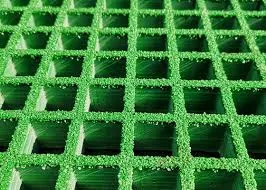
-
 Afrikaans
Afrikaans -
 Albanian
Albanian -
 Amharic
Amharic -
 Arabic
Arabic -
 Armenian
Armenian -
 Azerbaijani
Azerbaijani -
 Basque
Basque -
 Belarusian
Belarusian -
 Bengali
Bengali -
 Bosnian
Bosnian -
 Bulgarian
Bulgarian -
 Catalan
Catalan -
 Cebuano
Cebuano -
 China
China -
 China (Taiwan)
China (Taiwan) -
 Corsican
Corsican -
 Croatian
Croatian -
 Czech
Czech -
 Danish
Danish -
 Dutch
Dutch -
 English
English -
 Esperanto
Esperanto -
 Estonian
Estonian -
 Finnish
Finnish -
 French
French -
 Frisian
Frisian -
 Galician
Galician -
 Georgian
Georgian -
 German
German -
 Greek
Greek -
 Gujarati
Gujarati -
 Haitian Creole
Haitian Creole -
 hausa
hausa -
 hawaiian
hawaiian -
 Hebrew
Hebrew -
 Hindi
Hindi -
 Miao
Miao -
 Hungarian
Hungarian -
 Icelandic
Icelandic -
 igbo
igbo -
 Indonesian
Indonesian -
 irish
irish -
 Italian
Italian -
 Japanese
Japanese -
 Javanese
Javanese -
 Kannada
Kannada -
 kazakh
kazakh -
 Khmer
Khmer -
 Rwandese
Rwandese -
 Korean
Korean -
 Kurdish
Kurdish -
 Kyrgyz
Kyrgyz -
 Lao
Lao -
 Latin
Latin -
 Latvian
Latvian -
 Lithuanian
Lithuanian -
 Luxembourgish
Luxembourgish -
 Macedonian
Macedonian -
 Malgashi
Malgashi -
 Malay
Malay -
 Malayalam
Malayalam -
 Maltese
Maltese -
 Maori
Maori -
 Marathi
Marathi -
 Mongolian
Mongolian -
 Myanmar
Myanmar -
 Nepali
Nepali -
 Norwegian
Norwegian -
 Norwegian
Norwegian -
 Occitan
Occitan -
 Pashto
Pashto -
 Persian
Persian -
 Polish
Polish -
 Portuguese
Portuguese -
 Punjabi
Punjabi -
 Romanian
Romanian -
 Russian
Russian -
 Samoan
Samoan -
 Scottish Gaelic
Scottish Gaelic -
 Serbian
Serbian -
 Sesotho
Sesotho -
 Shona
Shona -
 Sindhi
Sindhi -
 Sinhala
Sinhala -
 Slovak
Slovak -
 Slovenian
Slovenian -
 Somali
Somali -
 Spanish
Spanish -
 Sundanese
Sundanese -
 Swahili
Swahili -
 Swedish
Swedish -
 Tagalog
Tagalog -
 Tajik
Tajik -
 Tamil
Tamil -
 Tatar
Tatar -
 Telugu
Telugu -
 Thai
Thai -
 Turkish
Turkish -
 Turkmen
Turkmen -
 Ukrainian
Ukrainian -
 Urdu
Urdu -
 Uighur
Uighur -
 Uzbek
Uzbek -
 Vietnamese
Vietnamese -
 Welsh
Welsh -
 Bantu
Bantu -
 Yiddish
Yiddish -
 Yoruba
Yoruba -
 Zulu
Zulu
Durable Fiberglass Walkway Grating Solutions for Safe and Efficient Pathways
The Versatility of Fiberglass Walkway Grating
In various industries and applications, safety and functionality take precedence. Among the materials that have garnered attention for their excellent properties, fiberglass walkway grating stands out as a leading choice. This innovative material provides a myriad of benefits that make it ideal for use in commercial, industrial, and even residential settings.
What is Fiberglass Walkway Grating?
Fiberglass walkway grating, also known as fiberglass reinforced plastic (FRP) grating, is a composite material made from resin and glass fibers. The process of its creation involves creating a panel that is lightweight yet strong, offering excellent structural support. The grating consists of a series of parallel and perpendicular bars that create a grid-like pattern, allowing for efficient drainage and maintenance while ensuring safety underfoot.
Key Benefits
One of the primary advantages of fiberglass walkway grating is its corrosion resistance. Unlike traditional materials such as steel or aluminum, fiberglass does not rust or corrode when exposed to moisture or harsh chemicals. This makes it ideal for environments such as wastewater treatment plants, chemical processing facilities, and coastal areas where saltwater can cause significant damage to metal products. The longevity of fiberglass grating reduces the need for frequent replacements, ultimately saving time and money.
In addition to its corrosion-resistant properties, fiberglass walkway grating also offers a lightweight alternative to traditional materials. This feature allows for easier installation and transportation, reducing labor costs and time spent on projects. The ease of handling makes it particularly appealing for use in areas that are difficult to access or require custom fittings.
fiberglass walkway grating

Safety is another paramount concern in any setting, and fiberglass grating excels in this regard. The surface of the grating can be designed with anti-slip properties, ensuring that pedestrians have a secure footing, even in wet or oily environments. This is crucial in industrial settings where spills can occur frequently. The grid-like structure also allows for proper drainage, minimizing the risk of slip and fall incidents.
Moreover, fiberglass walkway grating is available in a variety of designs, colors, and sizes. This versatility means that it can be tailored to the specific needs of any project, whether it's for a heavy-duty industrial application or a more aesthetic residential walkway. The material can be molded into different shapes, allowing for greater design flexibility.
Environmental Considerations
As the world becomes more environmentally conscious, the use of sustainable materials is increasingly important. Fiberglass grating is a relatively eco-friendly option as it requires less energy to produce compared to metals. Additionally, it can be recycled at the end of its life cycle, contributing to a circular economy.
Conclusion
In conclusion, fiberglass walkway grating proves to be a robust solution for numerous applications across various industries. Its unmatched durability, corrosion resistance, lightweight nature, and safety features make it a preferred choice for businesses looking to enhance their infrastructure without compromising on quality or safety. Whether for industrial use or residential applications, fiberglass grating delivers a reliable and adaptable solution that meets contemporary demands. As industries continue to evolve and prioritize safety and sustainability, the role of fiberglass grating will undoubtedly expand, supporting infrastructure and paving the way for innovative advancements in material technology.
Latest news
-
Exploring the Benefits of Top Hammer Drifter Rods for Enhanced Drilling PerformanceNewsJun.10,2025
-
High-Precision Fiberglass Winding Machine for GRP/FRP Pipe Production – Reliable & Efficient SolutionsNewsJun.10,2025
-
FRP Pipes & Fittings for Shipbuilding - Corrosion-Resistant & LightweightNewsJun.09,2025
-
Premium FRP Flooring Solutions Durable & Slip-ResistantNewsJun.09,2025
-
Premium Fiberglass Rectangular Tanks Durable & Lightweight SolutionNewsJun.09,2025
-
Tapered Drill String Design Guide Durable Performance & UsesNewsJun.09,2025









